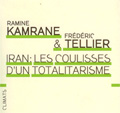“The crises generated by Tehran protect the Islamic regime more than they expose it, as long as the international community deals with them on a case-by-case basis, indifferent to the design that links them.” The tone of the book is set. It is that of a ruthless indictment that also includes an urgent call to recognize the true intentions of Iran’s Mullahs. Whether it’s the nobility of Persian cultural heritage or attempts to acquire nuclear weapons, the revival of Iranian cinema or the apparent opposition between moderates and hardliners in the regime, these topics are meticulously analyzed from start to finish in the book from two perspectives. According to the authors, these are not just tragic obsessions that confine and blind Iranologists, but are actually decoys intended to deceive the world and allow the religious leaders of the Islamic Republic to consolidate their grip on the country.
History might indeed vindicate the two authors of the book: after the oppressive revolutionary cover “justified” by years of war against neighboring Iraq, all attempts at openness, closely monitored by the West as was already done with appointments of Kremlin dignitaries during the USSR era, seem to have been short-lived. And for good reason, explain the authors. The Islamic Republic of Iran cannot allow the slightest evolution without risking total collapse. Its strategy, in the eyes of the world, is to “exaggerate to the point of caricature the rivalry at the top of the Islamic State.” Barely elected President in 1992, Hashemi Rafsanjani toured Iran announcing, with much public discourse, the opening of businesses to foreign capital. Five years later, another “moderate reformer” in the form of Mohammad Khatami took up the same position and promised an opening, this time towards civil society. On both occasions, the West regained hope, quickly dashed by reality. In both cases, Ramine Kamrane and Frédéric Tellier emphasize, the “Majlis” and the “top” of the regime, deeply attached to the 1979 revolution and to the principle of religious government, the Velayat-e faqih, blocked the “reforms”, further locked the gains, and intensified the “complete capture of wealth.”
Unlike the rigidities of the Soviet system, always entrenched in dogmatic denial, Iranian “totalitarianism” adapts to fluctuations and avoids ruptures. The notorious adaptability of Shiism plays on the opacity of decision centers, willingly presented as fragmented and in constant competition. The authors support their argument with three examples: the murder in prison of Iranian-Canadian journalist Zahra Kazemi, the confrontation with the West over the nuclear issue, and the controversial statements of President Ahmadinejad. In these three cases, they explain, “the alibi of the minority exonerates the entire system”: the journalist’s murder would be the isolated act of intelligence agents, not a politically motivated decision, the nuclear issue is far from unanimous within the regime, and the Iranian president belongs to a minority yet active faction. Hence the conclusions of their study: “the regime’s duplicity is a weakness turned into strength,” and the United States is “one Cold War behind” in their struggle against Iran. In this apocalyptic tableau drawn by the two political scientists, a glimmer of hope remains in their eyes: the regime will collapse from within, undermined by its inability to “control leisure and private life” and by the “corruption of the forces” supposed to repress the “deviants.” Until then, “duration equals normalcy.” The Iranologists, the “good” as well as the “bad,” thus still have good days ahead of them.
Ramine Kamrane and Frédéric Tellier, “Iran: Behind the Scenes of a Totalitarianism”, Coll. “Climates”, Flammarion Editions, 2007, 228 p., 19 euros.


